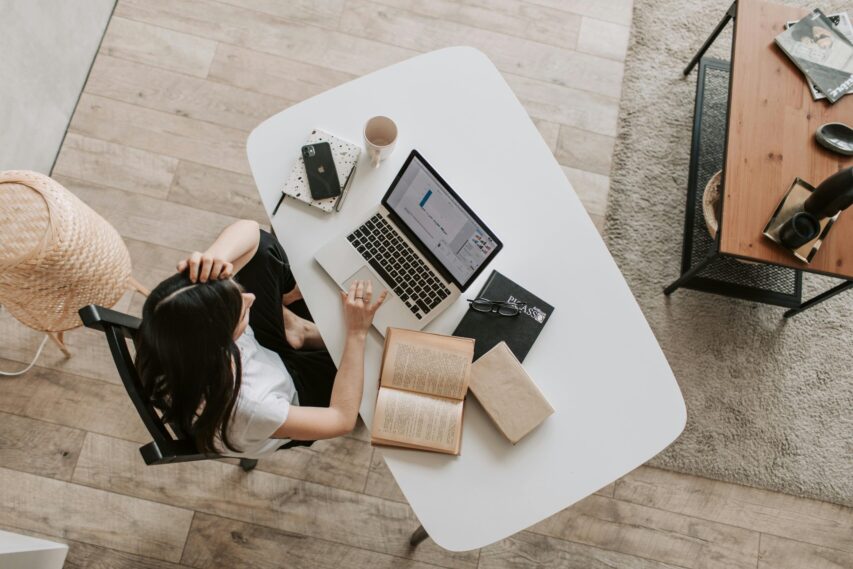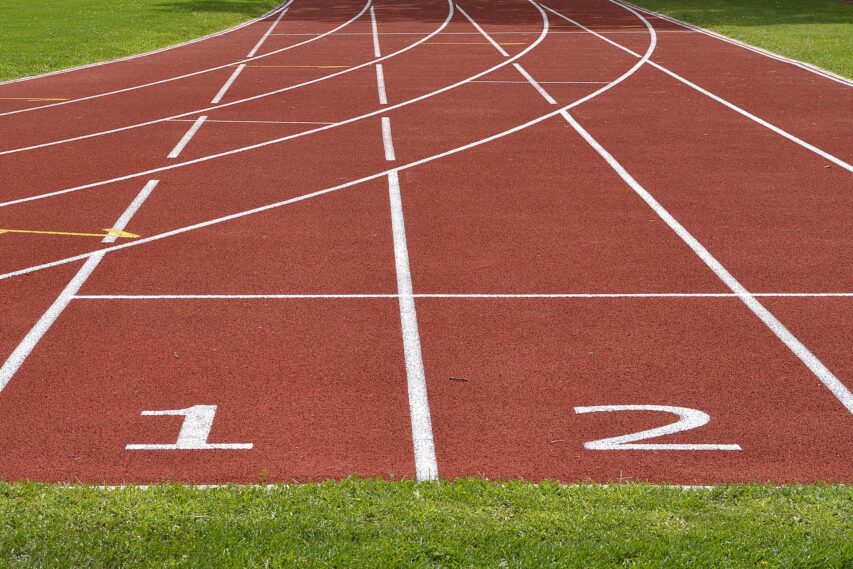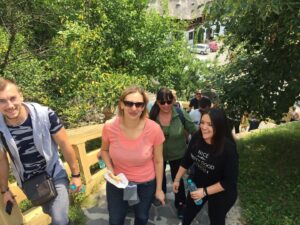Workshop –
yoga at the office
Office work at the computer for at least 8 hours a day, can affect your health. If you’re already experiencing pain in the neck, shoulders, legs, or eyes, is good to know that there are yoga techniques that can help to eliminate some of the negative effects that this type of work has on your health. Yoga exercises which I recommend, target tense areas but also help to calm the mind. Even a short session of practical yoga techniques is very beneficial.
1 Rolling head
You can practice this yoga technique seated or standing, with the body straight and eyes closed (it helps to better introspection and relaxation). Slowly turn your head from left to right (clockwise) by focusing on the neck. Repeat the movement in reverse the same number of times. Upon completion, you will perceive excellent vibration, slight warmth in the channel, mental activation, and transparency.
2 Sudden head movements
Seated or standing, with the body straight and eyes closed (it helps to better introspection and relaxation), twist the head sharply to the left around a vertical axis twice, then right all twice, left-back twice, and right-back twice. Finally, go back head twice, around a horizontal axis. The entire cycle is repeated at least five times. The movements are suddenly in quick succession. Upon completion, you will perceive a slight vibration in the neck, excellent training of subtle energies in the head, activation of latent mental potential, clarity, and detachment. It is essential to focus on the correctness of the posture when exercising the recommended yoga postures.
3 Swinging head
Seated or standing, with the body straight and eyes closed, swing your head left and right, about a horizontal axis. Try to speed up gradually. Repeat the cycle at least ten times. Upon completion, you will realize the free flow of subtle energies in the neck, dynamic attention, and clarity, with the rest being the unification of mind, a state of harmony.
4 Twist back
When you’re sitting, vertebral discs support the weight three times higher than when standing up, which means that problems can occur at any time at their level, often accompanied by pain. What to do? Twist your spine. Turn to the left. Place your left hand behind the seat to amplify the twist. Hold the position for 5 to 8 breaths, then come back and repeat the posture right.
5 Shoulder
Sitting on a chair, lift going back and sternum. Raise your right hand and bend the elbow. With your left hand behind your back, try to catch your right hand. Hold this position for 2 to 3 minutes and then repeat the movement but reversing hands. This exercise mobilizes shoulder and elbow joints, aligning the spine and giving inner blossoming and harmonization. It also strengthens the muscles of the chest.
6 Feet
If you have a sedentary job that keeps you glued to your seat for several hours a day, you will soon face inconvenience in the lower back, hips, and butt. Fortunately, with minimal effort, you can help eliminate the harmful effects of a long seat. Here are two practical yoga exercises! Place your left foot on the right knee, leaving your right leg free. Keep your back straight. Lean forward for a deeper stretch. After five breaths, change the position of the feet. Shoes off, and put your left foot (lying) on the desk. Then stretch your arms straight up and, with them, the trunk. Next, lean slightly toward the front and exhale; relax the back muscles and the back legs so you can get you’re had as close to the knee as possible. Bending will be first in the hip joint, your back as straight as possible. The hands must touch the left foot (or, at least, the ankle). After five breaths, change the position of the feet. Both exercises energize feet, increase vitality, and loosen the lower back, leading to inner regeneration and will quickly remove fatigue.
7 Stretch backbone
Spread your legs at a distance of about twice shoulder width with feet obliquely. Let yourself down as much as you can, exhaling through your mouth. Breathe in through your nose and then, deeply and completely, raise the trunk. Remember the air and immediately place palms on the thighs, even the angle between the thighs.
The elbows should be stretched. You can make slight twists that will help to increase the distance between the ribs and spine pushing. The exercise is unique in the recess and energizing of the body of the sciatic nerve. It confers flexibility.
8 Back
Back and chest muscles are tensed after a day at work while bent over the keyboard. To correct posture and alleviate back muscles, stand upright with your feet shoulder-width apart. Go hands parallel overhead and let yourself back slightly, pushing way ahead of your pelvis. Traces the top of hands or stays with eyes closed, relaxing the body. The position is ideal for releasing the tension in your back and lower back but has a therapeutic role in the case of fatigue and anxiety.
9 Aromatherapy
The best remedy for anxiety, stress, and mental fatigue is the volatile oil of lemon. Its therapeutic properties are incredibly numerous: tonic for the nervous system, reduces stress, helps in depression, protects against infection, immune-stimulant, helps concentration, and has rejuvenating properties. Use oil applied topically to the skin, below the nose, two times a day, or choose to put a few drops in the palm and then do inhalations. The oil is not recommended for pregnant women or nursing mothers. Avoid sun exposure if you apply lemon oil onto your skin due to its photosensitizing action.


